Impulsar la transición energética:
Optimización de las inversiones y planificación del despliegue de las centrales
La modelización, simulación y optimización de sistemas de suministro eléctrico es una de las principales competencias de Energynautics. En los últimos 15 años, Energynautics no sólo ha adquirido una amplia cartera de proyectos de referencia en el campo del análisis global de sistemas a nivel de red de transporte y generación, sino también una valiosa experiencia con una amplia gama de herramientas de software. Al igual que en otras áreas cubiertas por Energynautics, DIgSILENT PowerFactory se utiliza aquí, por supuesto, como software estándar para análisis detallados de redes, pero los estudios de sistemas globales en particular requieren a menudo algunos pasos adicionales de antemano, como la planificación de las capacidades de generación a lo largo de varias décadas y/o la planificación del despliegue de centrales eléctricas en resolución horaria. Para estos problemas de optimización técnica y económica, Energynautics suele utilizar PyPSA, PLEXOS o HOMER.
En función del tamaño del sistema, el presupuesto, el plazo, la tarea y los requisitos del cliente, Energynautics identifica la solución de software óptima y aporta la experiencia necesaria para la modelización, la simulación y la evaluación de los resultados. Ya se trate de la planificación de inversiones en redes y capacidades de generación, análisis de escenarios, optimización del despliegue de centrales eléctricas para escenarios futuros o análisis detallados sobre temas como los servicios del sistema y la integración de energías renovables: los expertos de Energynautics pueden llevar a cabo los estudios necesarios, interpretar y presentar los resultados y mejorar los conocimientos internos del cliente correspondiente mediante diversas formas de formación y perfeccionamiento.
PyPSA: Solución de código abierto de configuración flexible
Energynautics lleva más de diez años utilizando soluciones de software basadas en Python para el análisis y la optimización de redes y sistemas, tanto en forma de herramientas internas como de soluciones de código abierto. El software Python más reciente y potente de la cartera es Python for Power System Analysis (PyPSA), un conjunto de herramientas de código abierto con una trayectoria universitaria que se ha consolidado en todo el mundo. En los últimos años, Energynautics ha utilizado este software en diversos proyectos y ha llevado a cabo tareas relacionadas con la planificación de inversiones y la planificación de la utilización de centrales eléctricas.
En su forma libremente disponible, PyPSA está orientado principalmente a la realización de estudios estratégicos en la red europea y ha sido utilizado por Energynautics en varias ocasiones. Sin embargo, los ingenieros de Energynautics han desarrollado ahora una serie de funciones adicionales que permiten realizar análisis mucho más detallados:
- Creación de condiciones de contorno basadas en la red para el acoplamiento del mercado de la electricidad (acoplamiento del mercado basado en el flujo) para su uso en simulaciones del mercado de la electricidad.
- Cálculos de redistribución basados en los resultados del mercado de la electricidad importada.
- Planificación de la utilización de centrales eléctricas (en función de la red o del mercado) a nivel zonal y nodal, incluido el cálculo de redes seguras (n-1), mediante la integración de solucionadores enteros mixtos (Gurobi y HiGHS).
- Cartografía detallada de las características de las unidades de generación con funciones complejas de eficiencia y costes
- Modelización detallada de cascadas hidroeléctricas
- Optimización de los servicios del sistema, especialmente la potencia de control
- Optimización a largo plazo del despliegue de recursos y de los periodos de mantenimiento de las centrales eléctricas
PLEXOS: Norma industrial para problemas económicos complejos
Energy Exemplar PLEXOS es un software de simulación de sistemas energéticos (electricidad y gas) desarrollado comercialmente y muy centrado en cuestiones económicas. En principio, puede utilizarse para los mismos fines que PyPSA, pero tiene funciones de simulación de mercado mucho más detalladas y menos detalles específicos de la red. Energynautics ha utilizado este programa, entre otras cosas, para crear planes energéticos detallados en el Caribe. El uso de PLEXOS es especialmente aconsejable si el cliente ya utiliza el software: a diferencia de PyPSA, el funcionamiento de PLEXOS no requiere conocimientos de programación.
HOMER: Análisis rápidos para sistemas pequeños
HOMER Pro es desde hace tiempo una herramienta estándar para realizar análisis rápidos de inversión y funcionamiento en pequeños sistemas eléctricos. En comparación con PyPSA y PLEXOS, la funcionalidad es algo limitada, HOMER sólo puede simular sistemas con menos de 20 unidades de generación y no tiene representación de red. Sin embargo, la facilidad de uso y la robustez del software, así como la capacidad de crear y analizar rápidamente muchos escenarios, hacen de HOMER una herramienta muy útil, que Energynautics utiliza a menudo, especialmente para redes autónomas y sistemas híbridos. Con HOMER – a menudo en combinación con DIgSILENT PowerFactory y scripts Python de desarrollo propio – ya se han realizado estudios en las Islas Galápagos, las Bahamas, varias islas indonesias y sistemas aislados de la red en Europa.
Esta información también podría interesarle:
Una selección de nuestra cartera de servicios
Buscar referencias

Evaluación de puntos de conexión para nuevo conector HVDC entre España e Italia
Energynautics ha realizado un análisis para evaluar la viabilidad técnica de una nueva conexión submarina HVDC entre España e Italia.
Más información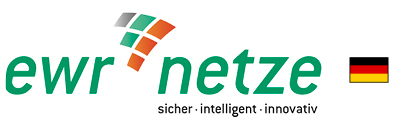
Proyección de carga y generación para una empresa eléctrica alemana
Energynautics recopiló proyecciones de carga y generación detalladas geográficamente para la red de distribución de EWR Netz GmbH, centrándose en el futuro crecimiento de la generación distribuida y la electrificación del uso final hasta 2040.
Más información
Recarga de bajo coste y apta para la red eléctrica en Bangladesh
Se ha desarrollado un cargador inteligente para estaciones de carga de vehículos de tres ruedas en Bangladesh con el fin de mitigar la carga de la red durante las horas punta.
Más información
Manual de integración del VE
Energynautics y RE-xpertise han elaborado un manual de buenas prácticas para la integración de vehículos eléctricos en la red de distribución.
Más información
Planificación del sistema eléctrico para el desarrollo del IRRP en los Estados de la CARICOM
En nombre de la GIZ, Energynautics apoyó al Centro Caribeño de Energías Renovables y Eficiencia Energética (CCREEE) en la planificación de la generación y la expansión de la red en Guyana y Trinidad y Tobago.
Más información
Dimensionamiento óptimo de los activos del parque eólico de Markbygden
Energynautics desarrolló el modelo de estado estacionario de la tercera fase del mayor parque eólico terrestre de Europa y realizó una serie de estudios tecnoeconómicos.
Más información
Optimización del funcionamiento de la red mediante la caja de control FNN
El objetivo del proyecto es desarrollar una caja de control que combine la inteligencia local y la capacidad de control central para los vehículos eléctricos, los sistemas fotovoltaicos, las bombas de calor y Co con el fin de optimizar el funcionamiento de la red.
Más información
Servicios de consultoría para el Programa del Centro de Energía Eólica del Mar del Norte
Este estudio investiga el potencial de los centros de energía eólica marina en el Mar del Norte en contraste con los parques eólicos conectados radialmente con el objetivo de optimizar la integración de la energía eólica marina.
Más información
Inversores inteligentes para la generación distribuida
Recomendaciones para incorporar inversores inteligentes con el fin de aumentar la capacidad de alojamiento fotovoltaico en las redes de distribución y la fiabilidad de la red.
Más información
Revisión de los servicios auxiliares para el regulador del sistema eléctrico mexicano
Los ingenieros de Energynautics apoyaron a una oficina del regulador mexicano en su revisión en curso de los servicios auxiliares necesarios para seguir aumentando la contribución de las energías renovables.
Más información
Estudio de la red de distribución de Renania-Palatinado, Alemania
El objetivo del Estado alemán de Renania-Palatinado es alcanzar un 100 % en energías renovables para el 2030. Mostramos la importancia de las redes de distribución de este estado y su contribución en las redes inteligentes. (Más información en inglés)
Más información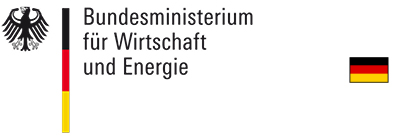
Snoopi – Control de red inteligente con alimentación fotovoltaica
Los sistemas de baterías fotovoltaicas no solo mejoran el autoconsumo: con nuestro controlador, contribuyen a estabilizar la tensión, preparando el camino para una mayor penetración fotovoltaica. (Más información en inglés)
Más información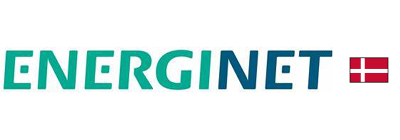
Proyecto Cell Controller
Desarrollo y prueba de un controlador universal de Smart Grid de alta gama en Dinamarca. Particularidad: funcionamiento completamente autónomo (modo isla) de la red de distribución solo con plantas de generación descentralizadas. (Más información en inglés)
Más información
Estudio de la Asociación Alemana de Fabricantes de Maquinaria y Plantas (VDMA) sobre el comportamiento de los motores de combustión interna en caso de fallos en la red
En caso de una caída de la tensión, los motores de combustión interna deben permanecer conectados de forma estable a la red. Con la ayuda de modelos y simulaciones, mostramos qué soluciones son especialmente prometedoras. (Más información en inglés)
Más información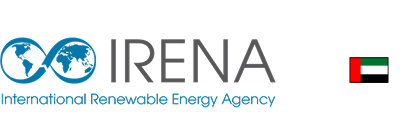
Estudio de los códigos de la red eléctrica de IRENA
¿Qué aspectos hay que tener en cuenta a la hora de desarrollar los códigos de la red para para habilitar un mayor porcentaje de energía renovable variable en los sistemas de energía y mantener al mismo tiempo un suministro eléctrico fiable y estable? Nosotros le damos las respuestas.
Más información
Campaña de medición para determinar la calidad del voltaje de una planta fotovoltaica de grandes dimensiones
Para suministrar energía eléctrica al campo de refugiados de Al Zaatari en Jordania se instaló una planta fotovoltaica de 12,9 MWp. Para determinar la influencia del sistema fotovoltaico en la calidad del voltaje, Energynautics llevó a cabo una campaña de medición en varios puntos de la red local. (Más información en inglés)
Más información
Revisión del código de red de Barbados
El objetivo de la política energética para 2029: 29% de energías renovables. Energynautics ha revisado y actualizado los códigos de planificación y operación de la red para facilitar alcanzar dichas metas.
Más información
3DMicroGrid
Las microrredes son una solución prometedora para la integración de las energías renovables. 3DMicroGrid aborda el diseño, el desarrollo y la demostración de una microrred activa e inteligente, preparada para el futuro, para la integración y optimización de diferentes fuentes de energía y cargas.
Más información
Estudio sobre la red europea 2030/2050
100% de electricidad renovable hasta el 2050? En nombre de Greenpeace, mostramos cómo diseñar la red europea para hacer realidad la [R]evolución energética.
Más información
Estudio de integración de red en Seychelles
El uso de energías renovables en islas aporta muchos beneficios económicos, pero también grandes retos técnicos: le mostramos cómo se pueden integrar las energías renovables en las Seychelles de forma óptima.
Más información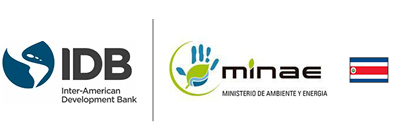
Estudio de integración de red en Costa Rica
El país dispone de un 100 % de energías renovables gracias a una ubicación excelente para la energía eólica, solar e hidráulica. Le mostramos cómo optimizar los sistemas para una integración total de energías renovables.
Más información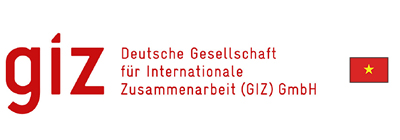
Directrices de gestión de riesgos para proyectos de energía solar fotovoltaica en Vietnam
El objetivo de este encargo era elaborar manuales de gestión de riesgos: directrices técnicas para proyectos solares fotovoltaicos montados en tierra y flotantes, desde la fase de desarrollo hasta la de desmantelamiento.
Más información
Estudio de investigación sobre la transición energética sostenible y las oportunidades de desarrollo de las infraestructuras energéticas
El objetivo del estudio era proporcionar información para la aplicación de la Resolución nº 55 “Estrategia Nacional de Desarrollo Energético de Vietnam hasta 2030, visión hasta 2045” del politburó del Partido de Vietnam y otras orientaciones para la transición energética sostenible en Vietnam.
Más información
Papel de las empresas de distribución en el uso de los servicios de apoyo a la red de los sistemas fotovoltaicos sobre tejado y el almacenamiento solar
La GIZ encargó a Energynautics que analizara los servicios que pueden prestar la energía solar fotovoltaica sobre tejados y el almacenamiento en baterías para apoyar la red de distribución en la India.
Más información
Comercio de emisiones ETS Plus: Simulaciones del mercado de la energía para el IFW
Energynautics fue subcontratada por el Instituto IFW de Kiel para la Economía Mundial dentro de un proyecto más amplio para evaluar el impacto del aumento de los precios de las emisiones en el sector eléctrico.
Más información
REEP 1000 Islas Indonesia – Estudio de red piloto
La Agencia Internacional de Cooperación Alemana, GIZ, encargó a Energynautics, Cadmus y ABO Wind la realización de estudios piloto para la integración de la energía renovable en dos sistemas insulares en Indonesia. El objetivo del gobierno indonesio para 2025 es que 23 % de la electricidad proceda de energías renovables. Los sistemas híbridos de las más de 17.000 islas indonesias pueden contribuir de manera significativa a alcanzar este objetivo. (Más información en inglés)
Más información